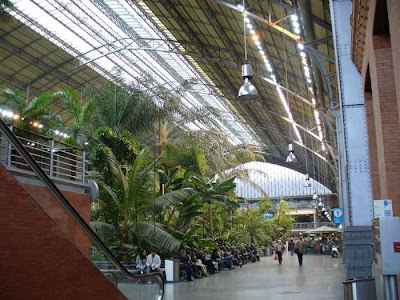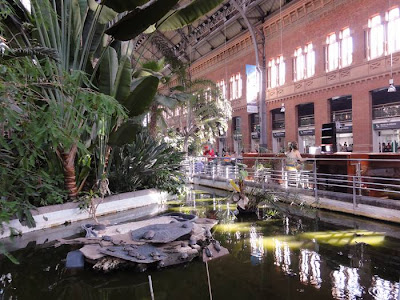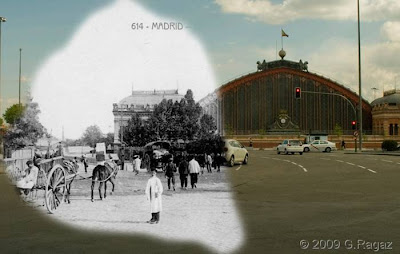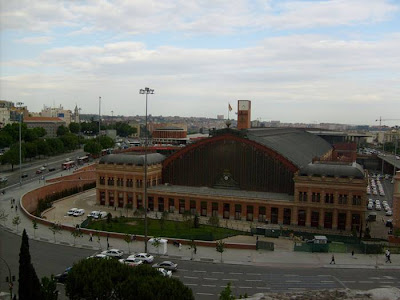Madrid-Puerta De Atocha Railway Station — Spain
Madrid Atocha (Spanish: Estación de Madrid Atocha, also named Madrid Puerta de Atocha) is the largest railway station in Madrid. It is the primary station serving commuter trains (Cercanías), intercity and regional trains from the south, and the AVE high speed trains from Barcelona (Catalonia), Saragosse (Aragon), Seville (Andalusia) and Valencia (Levante Region). These train services are run by the Spanish national rail company, Renfe. The station is in the Atocha neighborhood of the district of Arganzuela. The original façade faces the Plaza del Emperador Carlos V, a site at which a variety of streets converge, including the Calle de Atocha, Paseo del Prado, Paseo de la Infanta Isabel, Avenida de la Ciudad de Barcelona, Calle de Méndez Álvaro, Paseo de las Delicias, Paseo de Santa María de la Cabeza, and Ronda de Atocha.
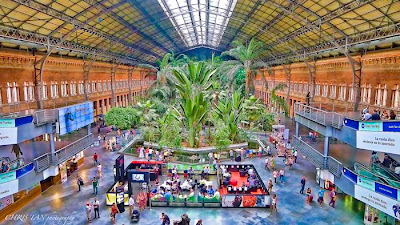
The Atocha station is really a railway complex, formed by the Madrid Atocha Cercanías and Madrid Puerta de Atocha stations of the Spanish national railways and the Atocha Renfe station of the Madrid underground. 11 more images after the break...
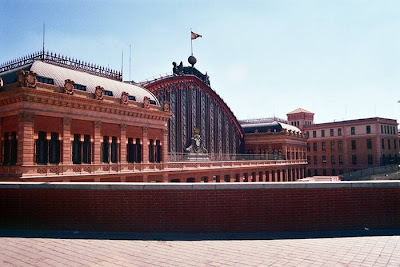
History — At this site, Madrid's first railway station was inaugurated on 9 February 1851 under the name Estación de Mediodía (Atocha-Mediodía is now the name of an area of the Arganzuela district, and means south in old Spanish). After the building was largely destroyed by fire, it was rebuilt and reopened in 1892. The architect for the replacement, in a wrought iron renewal style was Alberto de Palacio Elissagne, who collaborated with Gustave Eiffel. Engineer Henry Saint James also took part in the project. The name Atocha has become attached to the station because of the nearby basilica dedicated to Our Lady of Atocha. The train platforms were partly covered by a roof in the form of inverted hull with a height of approximately 27 meters and length of 157 meters. The steel and glass roof spreads between two brick flanking buildings.

This complex of railway tracks expanded through the years. In 1985, a project of complete remodeling began, based on designs by Rafael Moneo. In 1992, the original building was taken out of service as a terminal, and converted into a concourse with shops, cafés, and a nightclub. Like the Orsay Museum in Paris, the concourse has been given a new function, this time a stunning 4,000 m2 (43,056 sq ft) covered tropical garden.
A modern terminal was also designed by Moneo, and built in adjacent land to serve both the new AVE trains and local commuter lines. The main lines end in the new terminal; commuter train platforms are located underground, at the ingress to a rail tunnel extending northward under the Paseo de la Castellana. The station is served by two Madrid Metro stations, Atocha and Atocha Renfe. The latter was added when the new terminal building was constructed and is directly linked to the railway station.
